Johnson Counter Basics: How It Works and Main Considerations
2024-09-11
3783
Catalog

Figure 1: Johnson Counter
Johnson Counter
The Johnson counter is a synchronous counter that works by feeding the inverted output of the last flip-flop directly back to the input of the first flip-flop. To build an n-bit Johnson counter, you use n flip-flops, creating a continuous feedback loop where the output is cycled back into the system. This setup is also known by several names, including the twisted ring counter and walking counter, due to its cyclic operation resembling an inverted ring counter.
This counter is especially effective in systems that require sequential signal processing. The feedback mechanism doubles the number of possible states, providing twice as many distinct outputs as there are flip-flops. This makes the Johnson counter highly efficient for tasks like pattern generation and sequence control, commonly used in digital counters, shift registers, and finite state machines. These systems depend on smooth transitions between states, which the Johnson counter ensures.
Johnson Counter Circuit Dynamics
The Johnson counter operates through a series of n flip-flops arranged in sequence, with the output of the last flip-flop inverted and fed back to the first.

Figure 2: 4-bit Johnson Counter
For example, a 4-bit Johnson counter includes four D-type flip-flops, each with preset and clear controls. These controls allow easy initialization or resetting of the counter by toggling simple switches, making the counter flexible and user-friendly.
The clock input (CLK) is a must for keeping the system synchronized. It monitors the flip-flop outputs and ensures that they change state in unison with the clock signal. Depending on its setup, a Johnson counter can modify the clock signal's frequency. A three-stage counter, for example, can produce phase-shifted square waves, while a five-stage counter can serve as a synchronous decade counter. A basic two-stage counter can function as a quadrature oscillator. This flexibility makes the Johnson counter suitable for a wide range of applications, from signal generation to sequence control.
Johnson Counter Operations
|
State |
Q0 |
Q1 |
Q2 |
|
0 |
0 |
0 |
0 |
|
1 |
1 |
0 |
0 |
|
2 |
1 |
1 |
0 |
|
3 |
1 |
1 |
1 |
|
4 |
0 |
1 |
1 |
|
5 |
0 |
0 |
1 |
Chart 1: Johnson Counter Truth Table
A 3-bit Johnson counter operates by cycling through a series of predefined states, which are triggered by each clock pulse. For example, the counter may start with an output of "100" after the first clock pulse, then move to "110," "111," "011," and finally back to "001." This process repeats in a six-state cycle (MOD 6), providing predictable and consistent outputs. Such regularity is major for digital systems that rely on stable cyclic data processing.
3-bit Johnson Counter in Verilog
A Johnson counter can be easily implemented in Verilog. In a 3-bit counter, each flip-flop updates its output at the positive edge of the clock. When a reset signal is active, all flip-flops are set to zero. Otherwise, the last flip-flop's inverted output is fed back into the first, forming a loop. This feedback loop keeps the counter moving through its sequence without external intervention. Verilog code for a Johnson counter is straightforward, which underscores the counter's simplicity and reliability in practical use.
4-bit Johnson Counter
A 4-bit Johnson counter offers a more extended sequence, moving through eight distinct states. Each state is a different combination of outputs from the four flip-flops. This setup allows the counter to perform advanced tasks like pattern recognition or controlled data cycling. The sequence is tightly governed by clock pulses, guaranteeing stability even when timing signals change. This makes the 4-bit Johnson counter particularly useful in applications that require precise data sequencing and reliable timing synchronization.
|
CP |
Q1 |
Q2 |
Q3 |
Q4 |
|
0 |
0 |
0 |
0 |
0 |
|
1 |
1 |
0 |
0 |
0 |
|
2 |
1 |
1 |
0 |
0 |
|
3 |
1 |
1 |
1 |
0 |
|
4 |
1 |
1 |
1 |
1 |
|
5 |
0 |
1 |
1 |
1 |
|
6 |
0 |
0 |
1 |
1 |
|
7 |
0 |
0 |
0 |
1 |
|
8 |
0 |
0 |
0 |
0 |
Advantages and Limitations of Johnson Counters
Johnson counters excel at efficiently encoding more states than their flip-flop stages. For example, a counter with four stages can produce eight distinct states, effectively doubling the state capacity compared to a standard ring counter. This feature is particularly beneficial in applications that require longer sequences, such as pattern generators or frequency dividers.

Figure 3: Johnson Counters Starts All-zero State
Another advantage is that Johnson counters can start from an all-zero state without needing an external reset. This automatic initialization simplifies the design process and reduces the need for additional circuitry, improving reliability and lowering complexity in the system.
However, Johnson counters have limitations. Their non-binary counting sequence makes them less compatible with systems that require standard binary outputs. For instance, in binary-driven digital devices like calculators or certain types of counters, the non-binary output of a Johnson counter may need conversion to a binary format. This conversion requires additional circuitry, which can increase both complexity and cost.
Also, Johnson counters may leave some states unused, depending on how they're configured. This can lead to inefficiencies, especially if the unused states make the counter less optimized for the specific application. Designers need to account for this during planning and testing to ensure smooth operation.
In addition, while Johnson counters use fewer flip-flops to handle more states, this advantage can become a drawback in more complex designs. Managing larger state sequences with fewer flip-flops might require more advanced control logic and timing mechanisms, which can increase the size and cost of the device, especially when scaling up for more demanding applications.
Ring Counter vs. Johnson Counter
|
Feature |
Ring Counter |
Johnson Counter |
|
Structure |
Linear arrangement of flip-flops. |
Circular arrangement with feedback from
last to first flip-flop. |
|
Operation |
Single high state passed sequentially to
the next flip-flop. |
Feedback of inverted output from the last
flip-flop into the first. |
|
State Representation |
One state per stage (high state active at
a time). |
Two states per flip-flop (high and low),
doubling the output states. |
|
Sequence Capacity |
Directly equals the number of stages
(e.g., 4 stages = 4 states). |
Twice the number of stages (e.g., 4
stages = 8 states). |
|
Applications |
Simple sequence generation, mod-n
counters. |
Frequency dividers, digital clocks, and more
complex sequence generators. |
Advanced Applications of Johnson Counters
• Versatile Use in Electronic Systems
Johnson counters play a basic role in many electronic systems, offering flexibility for both simple and complex applications. A main advantage is their ability to function as frequency dividers. With fewer flip-flops required to handle multiple output states, they reduce the overall complexity and size of circuits. This makes them especially useful in designs where conserving space and energy is demand, such as in compact, battery-powered devices.

Figure 4: Electronic Systems
• Integration in Advanced Digital Logic
In more sophisticated digital systems like ASICs and FPGAs, Johnson counters are used to create efficient finite state machines. These machines require precise sequence control, which Johnson counters handle with minimal hardware. Their ability to cycle through multiple states with fewer components streamlines the design of complex control systems, allowing for reduced hardware without compromising on functionality.

Figure 5: Advanced Digital Logic
• Phase-Shifted Square Wave Generation
One of the stand-out uses of Johnson counters is in generating phase-shifted square waves. This capability is a must for systems that rely on precise timing, such as synchronized signal generation. By configuring Johnson counters to produce phase-shifted outputs, they become invaluable in telecommunications, digital clocks, and other devices where accurate timing is demanded. The counters allow designers to adjust phase shifts to meet specific requirements, elevating control in timing-sensitive applications.
Using Johnson counters in electronic designs improves both the precision and efficiency of signal processing. Their compact and efficient design makes them easy to incorporate into larger systems. For operators, the task revolves around managing the sequential logic and guaranteeing that the timing and sequence generation match the system’s requirements. This focus on accurate timing is the main to the counter’s reliable performance. In addition, the predictable nature of Johnson counters simplifies integration and troubleshooting, making them a practical choice for a wide range of applications.
Integration of Johnson Counter with 74LS164 IC
The 74LS164 IC offers a practical and streamlined way to integrate a Johnson counter into electronic systems. With its gated serial inputs and fully buffered clock, the IC enhances the counter's performance by guaranteeing fast and responsive operation. Its high-speed capabilities make it an ideal component for applications where precision and timing are major, supporting efficient operation in complex environments.
One of the main features of the 74LS164 IC is its asynchronous clear function, which allows for immediate resetting of the counter. This is particularly useful in applications that require fast, precise resets to maintain proper timing. The IC's high clock frequency capability further ensures that the Johnson counter can operate reliably under high-speed conditions. This combination of quick resets and the ability to handle fast clock signals makes the IC suitable for systems that prioritize speed and performance.
The 74LS164 IC plays a major role in managing the sequential state transitions of the Johnson counter. It provides precise control over each change of state, which is necessary to maintain the reliability of electronic circuits. By guaranteeing that the counter transitions smoothly from one state to the next, the IC helps maintain consistent performance, even in complex circuit designs. This integration improves overall system efficiency, reducing the potential for errors and increasing reliability.
Conclusions
The Johnson counter emerges as a basics yet sophisticated element in digital circuit design, distinguished by its ability to efficiently encode multiple output states with minimal hardware. Its inherent flexibility, demonstrated through various configurations and applications—from basic pattern generators to complete parts of complex finite state machines—underscores its relevance and versatility in electronic design. The comparative analysis with the ring counter further accentuates its superior capacity for managing longer sequences with fewer stages, thus optimizing both power consumption and circuit complexity. The Johnson counter's integration with components like the 74LS164 IC also exemplifies advancements in digital technology, offering enhanced precision, reliability, and user-focused benefits in modern electronics. By capitalizing on its unique properties and integrating it into sophisticated digital systems, the Johnson counter continues to play a basic role in pushing the boundaries of what is possible in the realm of electronic design and application.
 ABOUT US
Customer satisfaction every time. Mutual trust and common interests.
ABOUT US
Customer satisfaction every time. Mutual trust and common interests.
function test. The highest cost-effective products and the best service is our eternal commitment.
Hot Article
- Are CR2032 and CR2016 Interchangeable
- MOSFET: Definition, Working Principle and Selection
- Relay Installation and Testing, Interpretation of Relay Wiring Diagrams
- CR2016 vs. CR2032 What’s the difference
- NPN vs. PNP: What's the Difference?
- esp32 vs stm32: which microcontroller is better for you?
- LM358 Dual Operational Amplifier Comprehensive Guide: Pinouts, Circuit Diagrams, Equivalents, Useful Examples
- CR2032 VS DL2032 VS CR2025 Comparison Guide
- Understanding the Differences ESP32 and ESP32-S3 Technical and Performance Analysis
- Detailed Analysis of RC Series Circuit
 Mastering the 7812 IC: Technical Details, Pinout, and Circuit Design Tips
Mastering the 7812 IC: Technical Details, Pinout, and Circuit Design Tips
2024-09-12
 SPICE: Primary Dynamics, Applications, and Advantages
SPICE: Primary Dynamics, Applications, and Advantages
2024-09-10
Frequently Asked Questions [FAQ]
1. Is the Johnson counter asynchronous?
No, a Johnson counter is synchronous. All flip-flops in a Johnson counter are clocked simultaneously by the same clock signal.
2. How many unused states are there in a 4-bit Johnson counter?
A 4-bit Johnson counter has 8 unique states, utilizing a sequence that includes both the normal and inverted states of the bits. With 16 possible combinations for a 4-bit system, 8 of these are unused in a Johnson counter.
3. What is the advantage of using a Johnson counter over a simple ring counter?
A main advantage of the Johnson counter is its ability to generate twice the number of states compared to a ring counter using the same number of flip-flops. For example, a 4-bit Johnson counter can generate 8 states, while a 4-bit ring counter can only generate 4 states. This efficiency makes Johnson counters useful in applications requiring more complex state sequences without additional hardware.
4. Are ring and Johnson counters synchronous counters?
Yes, both ring and Johnson counters are types of synchronous counters. This means that the same clock signal triggers each flip-flop in these counters, guaranteeing precise timing and coordination in their operations.
5. How many flip-flops are required for a mod 10 Johnson counter?
A mod 10 Johnson counter, generating 10 unique states, requires 5 flip-flops. Johnson counters typically produce 2N states from N flip-flops, so 5 flip-flops are used to create the required 10 states.
Hot Part Number
 LMK316BJ475KD-T
LMK316BJ475KD-T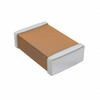 CL21A106KOQNNWE
CL21A106KOQNNWE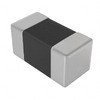 UMK212SD103JD-T
UMK212SD103JD-T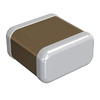 GRM033R60G474ME90D
GRM033R60G474ME90D LMK212B7105MG-T
LMK212B7105MG-T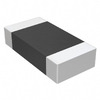 CC1206JRNPOABN391
CC1206JRNPOABN391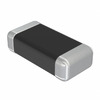 SMK316B7102MFHT
SMK316B7102MFHT B37931K1101K060
B37931K1101K060 TWCB276K125SCYZ0000
TWCB276K125SCYZ0000 61301021021
61301021021
- PIC24FJ64GA006-I/PT
- MAX7317AEE+
- ISL29501IRZ-T7
- ISL6845IUZ
- RC1218JK-07180RL
- MAX13053ESA+T
- SP3243EHCA-L
- CY7C1425JV18-250BZXC
- MAX4648EUT+T
- RT0603BRD07340RL
- TPS767D301PWP
- AD7476SRTZ-R2
- TPS70445PWPR
- T491A104K050AT4659
- CSD86350Q5D
- UC3907DWTR
- STP16CL596MTR
- TUSB2036VF
- AST2520A1-GP
- BSC252N10NSFG
- CY22150FC
- MB86605PMT-G-BND
- MT47H32M16BN-5E:D
- PEB20256FEV2.1ES
- SC900668AK
- TC74HC139AF
- TFA9897UK
- VOL617A-3X1
- XC3042L-8PC84C
- M82C55AFP2
- RSST7551M
- RTD2550-CG
- WAC-034-B-X
- HY27UF081G2A
- MC145146P2
- ADSP-BF531BBSTZ400
- M37702E8BHP#U0
- SFXG50FY902
- TC35168BF-001